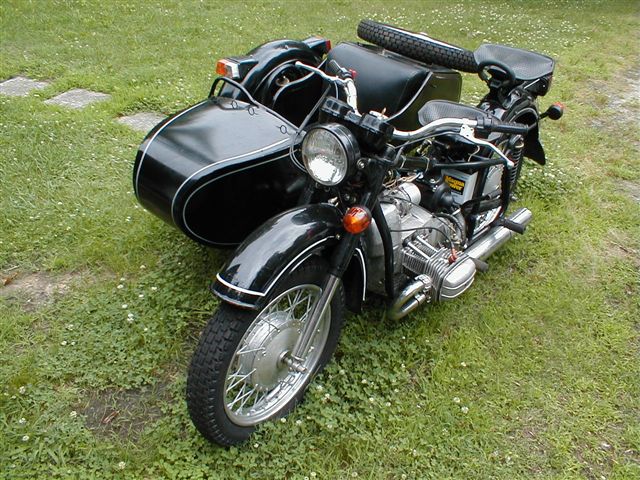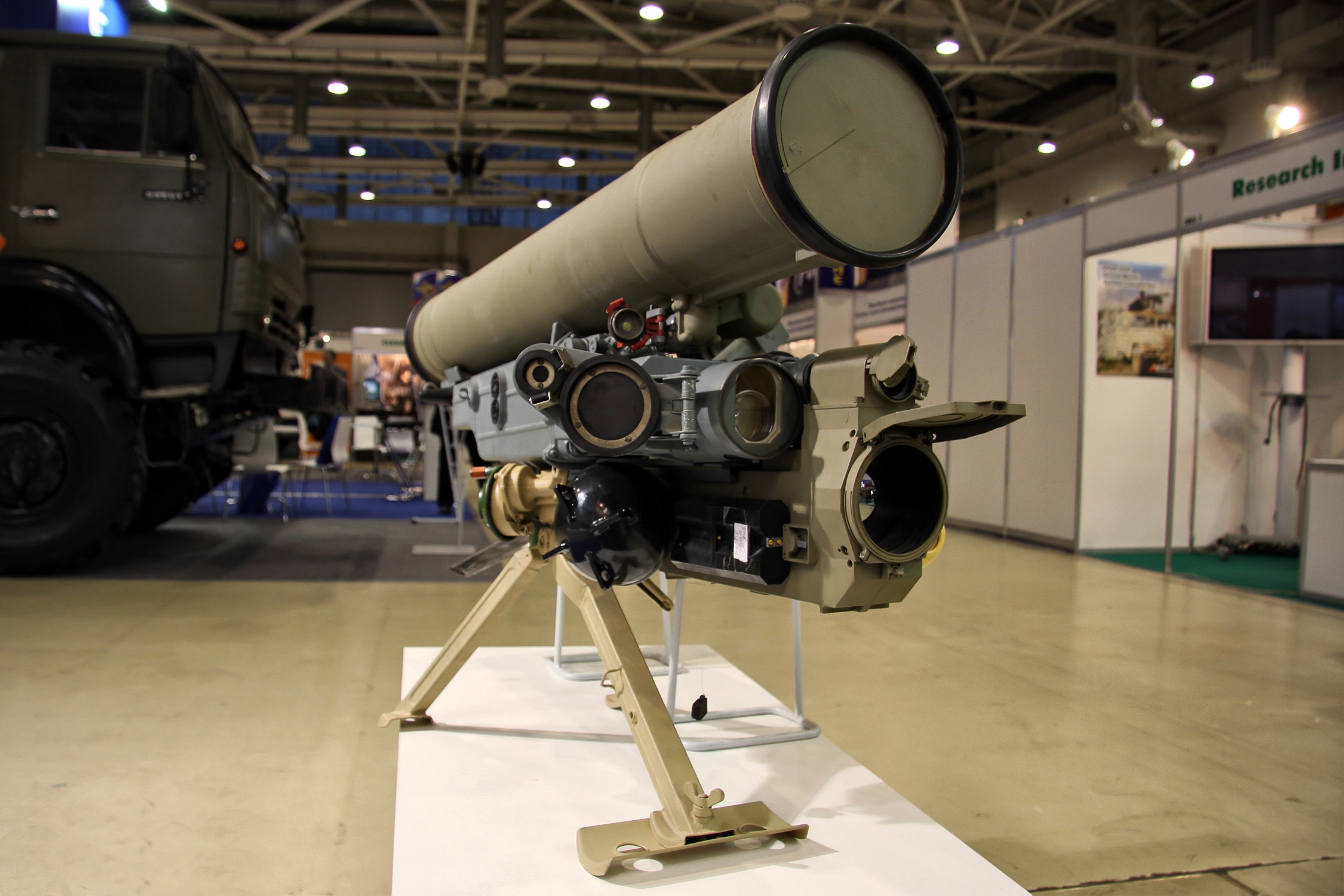An unspecified group of Ukrainian soldiers has released a video that shows the unit with at least three motorcycles fitted with sidecars, each one packing a 9K115-2 Metis-M anti-tank guided missile system. While unique technicals and non-standard tactical vehicles have certainly become a recurring aspect of the conflict between Russia and Ukraine, this may be the first time we have seen tank-killing firepower paired with motorcycle-borne troops.
The video showcases the vehicles alongside what are likely their operators. Six masked soldiers, two for each vehicle, can be seen beside bikes that definitely have a World War II vibe. While the video may look like the sidecars are modified with the launchers, they are not. They are sitting on their tripods in the sidecars. While a missile-equipped motorbike would certainly be intriguing, actually making such an arrangement work would be challenging and limiting in a tactical sense. The back-blast from the missile alone may not be conducive to such an arrangement.
In this case, the 9K115-2s would ultimately just be hauled by the rider in the sidecar so that the two-man team can get to a target area, set up, take their shot, and rapidly exit the area. A motorcycle is quick, agile, hard to spot, and can easily be hidden if need be. These hit-and-run tactics are being employed on a large scale by Ukrainian forces, and especially by ones using buggies and small tactical vehicles that can go pretty much anywhere and are hard to spot.
All three motorcycles in the video are said to be Dnepr-brand MT-11 models that were introduced in the 1980s and produced locally by the Kyiv Motorcycle Plant in Soviet Ukraine, which unveiled its first military model, the MV-750, in 1964. The original design for Dnepr-brand motorcycles was based on the commercially available BMW R71, which was licensed from the Nazis by the Soviet Union in 1940 who then went on to make their own M-72 clones. The MT-11 from the video, however, is said to have been one of Dnepr’s most successful models ever produced and boasted a load capacity of up to 573 pounds, although the bike is reported to have often been subjected to much heavier weight.

The missile system that can be seen in its sidecar in the footage is a man-portable, wire-guided Russian Metis-M anti-tank missile system, which is designed specifically for infantry-level units such as the one seen in the video. Among NATO countries, it is often referred to as the AT-13 Saxhorn-2, and the Main Missile and Artillery Directorate of the Russian Federation’s Ministry of Defense have it designated as just 9K115-2. Manufactured by KBP Instrument Design Bureau, a Russian defense company that designs precision weapon systems, the 9K115-2 Metis-M was introduced in 1992 shortly after the fall of the Soviet Union.
The 9K115-2 is an improved version of its predecessor, the 9K115, which was adopted by Soviet forces in 1982. The 9K115-2 was also intended to be a more mobile and reliable alternative to the even older 9K111 originally introduced in the early 1970s but remains in use to this day. While all of these systems offered a relevant anti-tank capability, the 9K115-2 Metis-M joined the ranks in hopes of improving upon the maximum range and armor penetration achieved by those that came before it.

The overall system can be operated by a single person if needed and is made up of a 9P151 reusable tripod-mounted launcher, a 9S816 sight module, and the 9M115 guided anti-tank missile. The wire-guided system uses what is called semi-automatic command to line of sight, or SACLOS, a method of missile guidance that directs the missile to the target through the human-operated 9S816 sight module that can calculate the distance between the missile’s position and the intended target and provide electronic instructions to the missile throughout its flight path.
The 9M115 missile itself is equipped with a high-explosive anti-tank, or HEAT, warhead that is capable of penetrating up to 460 mm of rolled homogenous armor, which is a type of steel that has been hot-rolled in order to better fortify armored vehicles. Its performance specs, which likely only apply under absolutely optimal circumstances, cite a range of up to 3,280 feet and a max speed of up to 731 feet per second. Its minimum range of about 131 feet, though, makes it ideal for urban combat, and despite the system’s specifications claiming that it can be fired from inside some structures, it’s safe to say that a motorcycle’s sidecar was not considered as such a structure during the 9M115’s development process.

Small and highly-mobile strike teams have been extremely pivotal in many of Ukraine’s successful anti-armor operations against Russian forces. The compact size, low profile, agility, and the efficiency of the sidecar-equipped bike-ATGM combo may seem pretty humble, but they could spell trouble for Russian vehicles in pretty much any combat environment.
Contact the author: Emma@thewarzone.com
